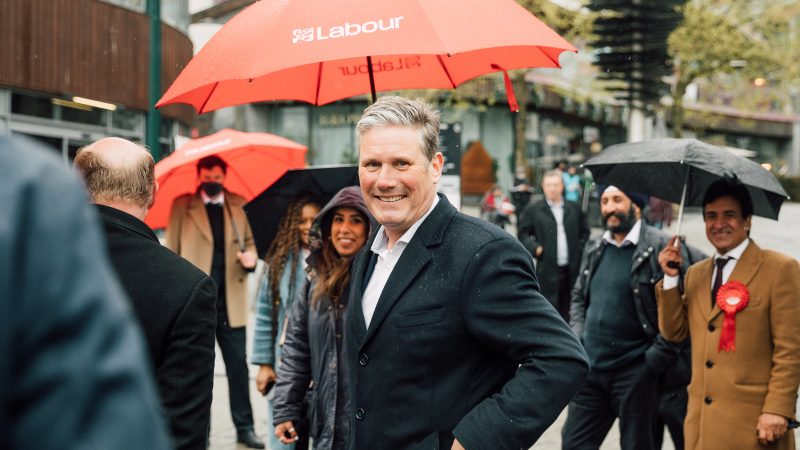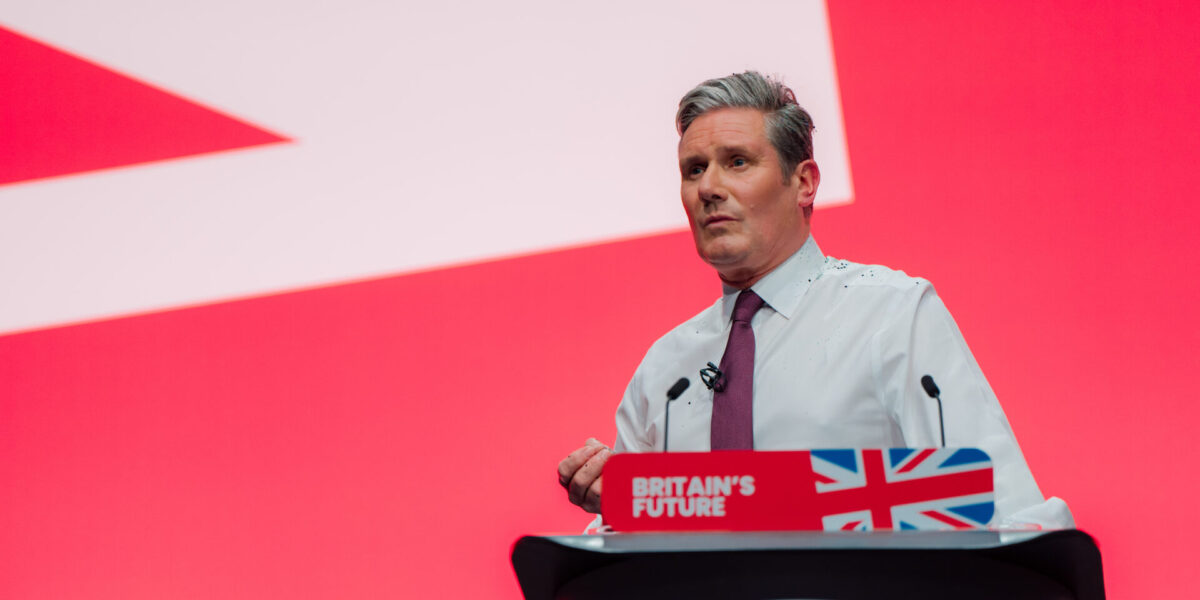By comparison to 2022, this year has been rather steady, at least in terms of political polling. Britain Elects’ poll of polls tracker generates an average share across all published polls and recorded the Conservatives’ share as 26% on 2 January, 25% on 30 November. The equivalent figures for Labour were 47% and 44%.
Consistently strong leads in the polls and several stunning by-election results served to bolster the sense that the Labour Party is a government-in-waiting. According to Ipsos, nearly 2 in 3 Britons expect Labour to form the next government.
Part of the reason for this is the damage wrought to the Conservative brand since 2019, particularly in terms of sound economic management. As a colleague has put it, the next election could well be a case of “better the devil you don’t know…”
Alongside this mainly repetitive pattern in headline voting intentions, there have been some important developments in public sentiment and discourse in relation to issues which look likely to feature at the next general election.
One of these is housing – an issue which Bagehot, The Economist’s political columnist, identified as the starting point of “most problems in British politics”. He also framed the ‘Builders versus the Blockers’ conversation on housing this year, subsequently adopted by Keir Starmer and Lisa Nandy among others.
Here are ten features of public opinion in relation to housing, drawn from Ipsos polling on the topic this year.
1. Labour continues to perform well among mortgage holders, and owners.
This tenure has been the last remaining ‘bellwether’ tenure since Labour won over private renters in 2017. Across September to November, Labour’s share among mortgage holders was 47%, much improved on the estimated 33% it got in 2019. This matters because of the tenure’s voting power; mortgagors were 25% more likely than private renters to turn out to vote in 2019.
2. The public have a dim view of the Conservative’s record
Just 18% of voters think the Conservatives are doing a good job at improving housing in Britain. Those who voted Tory in 2019 are more generous but, even among this group, just 29% were positive. Importantly, in June, three-quarters of Britons attributed rising mortgages to the government’s economic policies.
3. This translates into a strong Labour lead on the issue.
Asked which party has the best policies on housing, 40% say Labour, 14% the Conservatives (the party’s largest lead of 11 policy issues). No surprises really given this is the historical norm, but Labour had been trailing on the issue at the end of the 2000s.
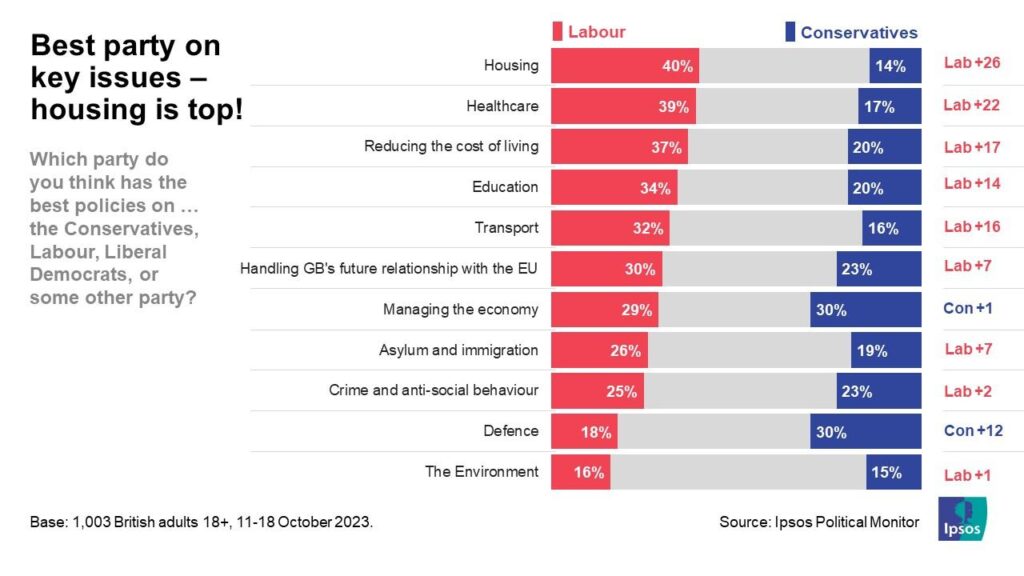
4. Housing has become more salient in voters’ minds.
In 2005, on the eve of the general election, just 5% of people spontaneously mentioned housing among the most important issues facing the country. It simply wasn’t top-of-mind and its salience fell to similar levels during the pandemic having been 17% at the 2019 general election. Our last measure was 18%.
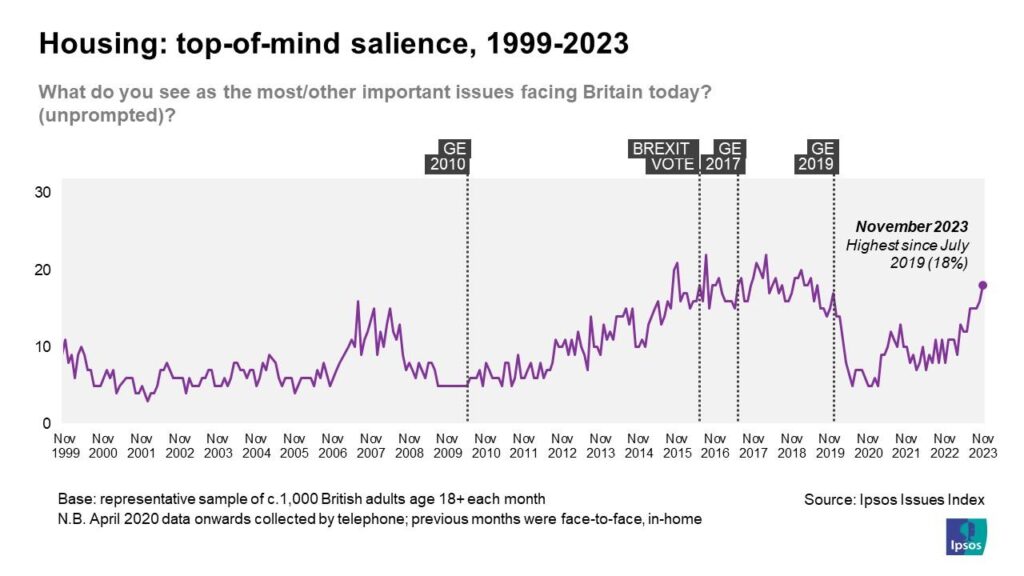
5. The housing crisis is local and global.
Ipsos found housing to be a top five issue determining the way people voted at May’s elections (ahead of immigration). While all housing is local, housing crises exist worldwide. A global study this year found new housing supply to be the top infrastructure investment priority (among 14 options) in Australia, Ireland, Canada, Chile, Germany, Netherlands, and Poland.
6. The housing crisis is an affordability crisis, especially for renters…
At the turn of the year, we found a third of private renters reported spending at least half of their personal monthly income on their rent. In May, we found half rated the availability of affordable properties to rent as a very serious problem. Social housing is also believed to be in short supply.
7. Under-supply is seen as a political failing, but people matter too…
Overly restrictive planning features near the top among a list of reasons for the undersupply of housing but, in the public’s eyes, comes behind political disinterest and local opposition.
True to form, the same Ipsos polling found public support for new housebuilding to be very conditional on the detail and practicalities. The public are more ‘maybe’ than nimby or yimby, implying a need for astute local leadership on the issue.
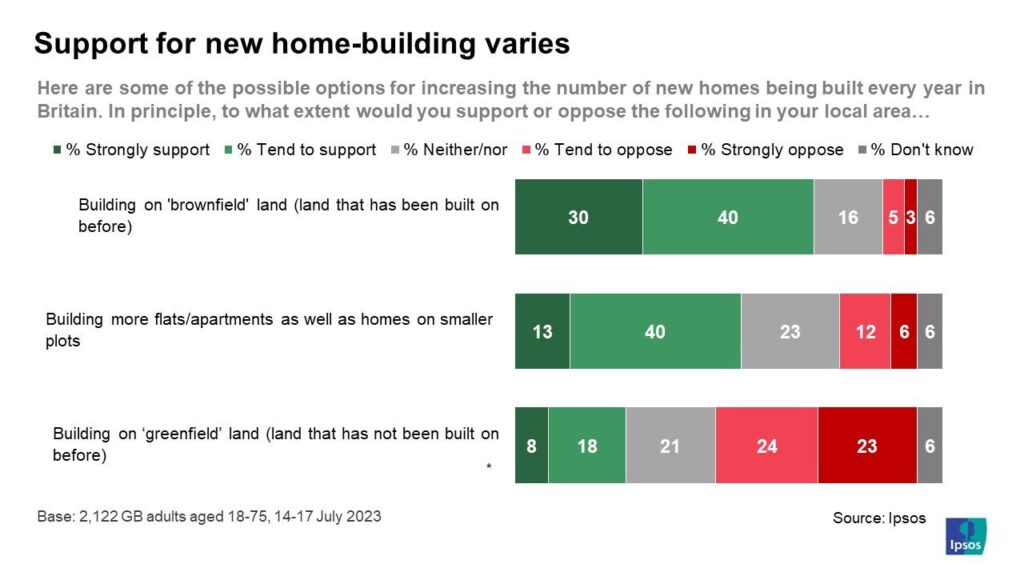
8. Confidence is low…
Two-thirds lack confidence Britain will build enough homes in the future. Most people expect homelessness to get worse. Many aren’t sure that a change of government will make things better.
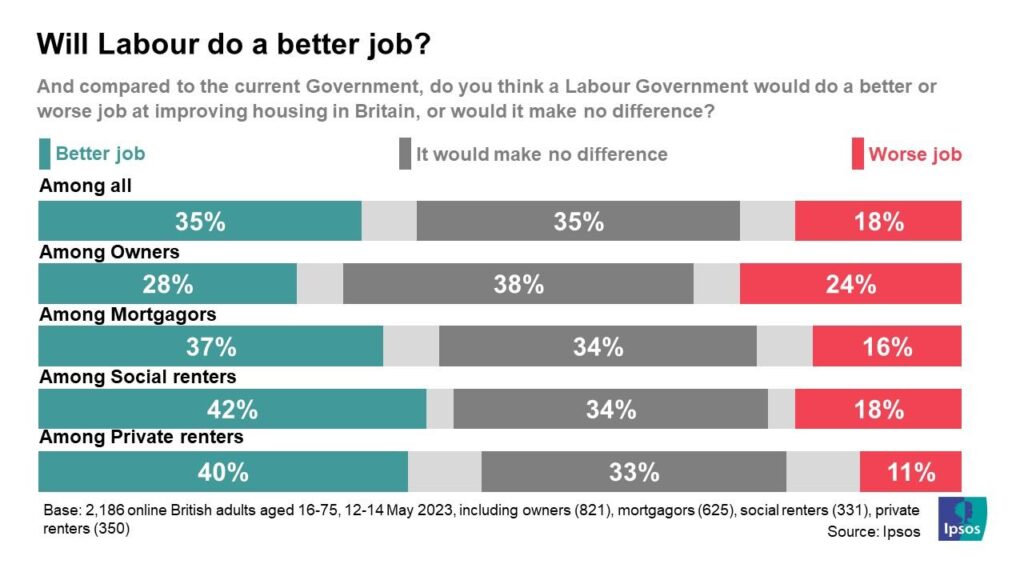
The public are bold on housing and supportive of action – this year we added provisions contained within the Renters Reform Bill to our list of rent caps, taxing second homes, and extending Right to Buy (yes, that) of popular policies. Above all, people want to see evidence of action because they haven’t seen much so far.
9. …but positivity is possible (and necessary).
Our research for Prince William and the Homewards initiative showed that facts, figures and case studies have the potential to shift perceptions into more positive territory. When people are shown that schemes like Housing First can make a sustainable difference to homelessness and can deliver savings and alleviate pressure on public services, they become more engaged and more encouraged that some progress is possible.
10. Don’t assume people are as interested as you!
In May, two in five Britons and a similar proportion of private renters said they had not heard of the Renters’ Reform Bill. And while private renters are widely recognized as having had the rawest deal from actions taken by the Conservative government in recent years, this group has the lowest propensity to vote.
This depends on the issue – in June, three-quarters of Britons said they were following news about rising interest rates very or fairly closely, a higher proportion than were following stories about public sector strikes and the war in Ukraine.
The next general election campaign will likely amplify, but also disrupt, what we’ve witnessed during 2023. As it is on much else, Labour may be in poll position on housing but the race isn’t won yet.

Ben Marshall
Ben is a Research Director at Ipsos UK and long-time commentator on public opinion and housing. He has managed for-policy research and evaluation projects for a range of clients including the Chartered Institute for Housing, Shelter, DWP, DLUHC, The Royal Foundation (supporting Homewards), Create Streets and The Economist.
